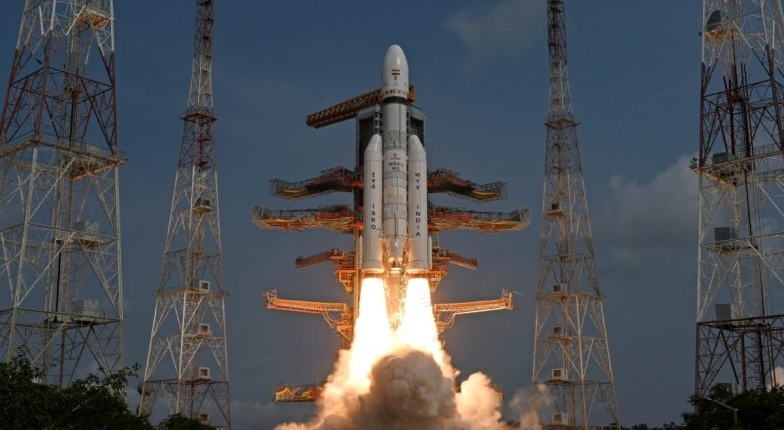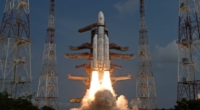OneWeb has successfully deployed 36 internet satellites from its fleet via the Indian Space Research Organisation’s heaviest LVM3 rocket. The deployment marks OneWeb’s second satellite deployment from India, with 616 satellites now in its fleet, more than enough to launch global services later this year. The satellites were placed into low-earth orbits, divided among 12 planes at an altitude of about 1,200 km from the Earth’s surface, and were separated at an altitude of 4 km to prevent inter-plane collision. This mission highlights the success of India’s space program and its contributions to the global space industry. The launch vehicle took off with a total payload of 5,805 kg and gained the required altitude of 450 km in about nine minutes of flight. This marks the sixth consecutive successful flight of the LVM3 rocket, which was used in five consecutive missions, including the Chandrayaan-2.
ISRO Launches 36 Internet Satellites for OneWeb Group Company
The Indian Space Research Organisation (ISRO) has successfully launched 36 internet satellites for the UK-based OneWeb group company using its heaviest LVM3 rocket. This is the second dedicated mission of NewSpace India Ltd (NSIL), the commercial arm of ISRO, for OneWeb. The rocket lifted off at a predetermined time of 9 am from the Satish Dhawan Space Centre’s second launch pad, 135 km from Chennai, following a 24.30-hour countdown.
The LVM3 rocket sequentially deployed the 36 satellites into multiple orbits, with the first set of 16 satellites injected about 20 minutes after lift-off, and the remaining placed into intended orbits later. The entire mission was accomplished successfully, with all 36 OneWeb Gen-1 Satellites injected into the intended orbits, as confirmed by OneWeb.
The OneWeb global communication network aims to enable connectivity for governments and businesses through satellite-powered technology. The successful launch of the satellites is seen as a boost for ISRO’s Human Space Mission, according to S Somanath, the ISRO chairman. He expressed gratitude to NSIL for its support and OneWeb India’s confidence in ISRO for building the rocket. Union Minister Jitendra Singh also lauded ISRO for the accomplishment.
The LVM3 rocket carried a total payload of 5,805 kg, achieving satellite injection conditions and gaining the required altitude of 450 km in about nine minutes of flight. The success of this mission marks the sixth consecutive successful flight for LVM3.
This launch is the second batch of 72 satellites that ISRO had signed an agreement with Network Access Associates Ltd, United Kingdom, a OneWeb Group Company, to launch into Low-Earth orbits (LEO). The first batch of 36 satellites was launched on October 23, 2022, by ISRO.
At the Mission Control Centre, addressing scientists, S Somanath congratulated NSIL, ISRO, and OneWeb for the successful launch of the mission. He added that the remaining spacecraft separation confirmation would be received soon, once the onboard storage data is acquired by Indian ground stations.
OneWeb’s Satellites Successfully Deployed by ISRO
OneWeb, the global communication network powered from space, has successfully deployed 36 internet satellites from its fleet, marking its second satellite deployment from India. The satellites were carried by the Indian Space Research Organisation’s heaviest LVM3 rocket, which accomplished the mission’s objective of placing the satellites into intended orbits with minimal disturbances.
The launch marks the 18th for OneWeb, while it is the second mission for ISRO in 2023, following the SSLV/D2-EOS07 launch in February. D Radhakrishnan, the Chairman and Managing Director of NewSpace India Ltd, hailed the Indian space agency for undertaking a complex mission and being successful in it. He thanked OneWeb for putting its faith in NSIL’s capabilities.
ISRO Chairman S Somanath expressed gratitude to NSIL for its support and the confidence that the OneWeb India team reposed in ISRO for building the rocket. Union Minister Jitendra Singh lauded ISRO for the successful launch, stating that India has emerged as the frontline Space Tech nation of the world under PM Narendra Modi.
The first set of satellite separation, comprising four of the 36 satellites, took place around 20 minutes after lift-off, while the remaining were deployed into their respective orbits in phases later. The satellites were placed into the low-earth orbits and divided among 12 planes at an altitude of about 1,200 km from the Earth’s surface, with each plane separated at an altitude of 4 km to prevent inter-plane collision.
OneWeb now has 616 satellites in its fleet, which is more than enough to launch global services later this year. This mission marks OneWeb’s second satellite deployment from India, highlighting the collaboration between the United Kingdom and Indian space industries.
The launch vehicle took off with a total payload of 5,805 kg at a predetermined time and gained the required altitude of 450 km in about nine minutes of flight, achieving satellite injection conditions, ISRO said in a statement. NewSpace India Ltd, the commercial arm of ISRO, signed an agreement with OneWeb Group Company to launch 72 satellites into Low-Earth orbits, with the first batch of 36 satellites launched in October 2022.
The successful deployment of OneWeb’s satellites is a significant accomplishment, given the complexity of the manoeuvre and the collaboration required to achieve it. The mission highlights the success of India’s space program and its contributions to the global space industry.
ISRO’s LVM3 Rocket: Sixth Consecutive Successful Flight
ISRO’s LVM3 rocket, previously known as GSLV Mk III, has completed its sixth consecutive successful flight. The rocket was used in five consecutive missions, including the Chandrayaan-2.
Don’t miss interesting posts on Famousbio










